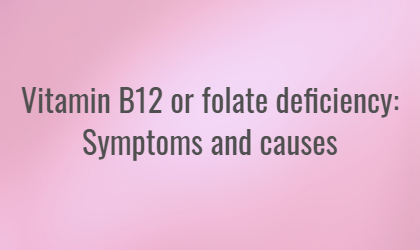
A building block of all life, iron is essential for your child’s health, happiness, and development. Crucially, this mineral supports haemoglobin production – a protein that binds to red blood cells and carries oxygen around the body – contributing to a reduction of tiredness and fatigue.
Iron also contributes to the normal function of the immune system, making it even more important for children as they enter school and encounter new infections.
Without enough iron, your child will come up against numerous obstacles. A shortage may even lead to iron-deficiency anaemia – a condition characterised by lower-than-normal levels of either red blood cells or haemoglobin, which reduces the amount of oxygen transported around the body.
Fortunately, you can prevent and indeed treat an iron deficiency with the correct application and dietary changes, as we outline below.
How much iron does my child need?
Infants, children, adolescents, and menstruating teenage girls need varying amounts of iron (1).
| Group | Age | Iron (mg) per day |
|---|---|---|
| Infants | 0-3 months | 1.7 |
| 4-6 months | 4.3 | |
| 7-12 months | 7.8 | |
| Children | 1-3 years | 6.9 |
| 4-6 years | 6.1 | |
| 7-10 years | 8.7 | |
| Adolescents | 11-18 years | 14.8 (girls) |
| 11.3 (boys) |
How do I know if my child has iron deficiency?
Several red flags may indicate your child has as iron deficiency. Keep an eye out for the following symptoms (2):
-
General tiredness and a lack of energy
-
Lack of concentration
-
Poor appetite
-
Craving non-food items (‘pica’), such as paint, dirt, ice or starch
-
Brittle nails
-
Pale skin
-
The tongue appears redder than normal
What are the causes of iron deficiency in children?
Poor diet
A poor dietary intake of iron is the most likely cause of an iron deficiency in children and teenagers. This is especially true if your child is a picky eater or eats an unbalanced vegetarian or vegan diet since animal-based foods are some of the richest iron sources available. Drinking too much cow’s milk may also inhibit iron absorption.
Menstruation
Thanks to the loss of iron-containing blood each month, teenage girls with heavy periods (menorrhagia) are more likely to experience an iron deficiency. As such, their recommended daily iron intake is much higher than their male counterparts.
Gastrointestinal issues
If your child experiences gastrointestinal issues, like Crohn’s or celiac disease, they may find it hard to absorb iron from food and develop an iron deficiency as a result.
Blood loss
Though rare, a stomach ulcer or chronic bowel inflammation may lead to blood loss and iron deficiency.
Preventing an iron deficiency in children
Increasing your child’s dietary iron intake is undoubtedly the best way to prevent an iron deficiency.
Iron-rich foods for kids
In the nutritional world, iron is found in two different forms: haem iron from animal foods and non-haem iron from plant foods.
Haem iron sources
-
Beef (red meat contains more haem iron than poultry)
-
Lamb
-
Pork
-
Poultry – chicken and turkey
-
Liver
-
Oily fish – mackerel, canned tuna, and sardines
-
Seafood – clams, oysters, and mussels
-
Egg yolks (must be hard-boiled for children under one-year-old)
Non-haem iron sources
-
Pulses and beans – peas, beans, and lentils
-
Dark leafy vegetables – kale, spinach, broccoli, and parsley
-
Dried fruit – dried apricots, dried figs, raisins, and dried prunes
-
Whole grains – brown rice, spelt, and oats
-
All nuts and nut butter (never give whole nuts to children under five due to the choking risk)
-
Seeds – sunflower seeds and sesame seeds
-
Fortified breakfast cereals
-
Tofu
The body absorbs haem iron found in animal foods more easily than non-haem iron, which may be challenging if your child is vegetarian, vegan or eats little to no red meat.
However, vitamin C is known to support iron absorption (3). With this in mind, try to include vitamin C-rich foods or drinks rich at each meal for your child.
Sources of vitamin C include:
-
Citrus fruits – lemons, grapefruit, and oranges
-
Vegetables – broccoli, spinach, peppers, squash, cauliflower and cabbage
-
Fruit juices – citrus fruit juices
As we’ve already mentioned, milk may negatively affect iron absorption, so try to limit your child’s intake where possible. The tannins in tea and coffee do much the same. If your teen enjoys these beverages, try to moderate their consumption.
Iron supplements for kids
Besides encouraging your child to eat more iron-rich foods, adding a specialist multivitamin may help to cover any nutritional shortfalls in their diet. Most formulas for children or teenagers will supply relevant levels of iron.
Treating an iron deficiency in children
If you suspect your child has an iron deficiency, it’s important to see their GP before it escalates into iron-deficiency anaemia.
A simple blood test measuring your child’s ferritin – a protein that stores iron in the body – will indicate their overall iron status and reveal if they have an iron deficiency. (Link to article: low ferritin levels: symptoms and causes)
If your child has an iron deficiency, don’t worry. It’s easy to treat. Aside from the dietary changes outlined above, your child’s GP will suggest iron supplements, which are widely available without a prescription.
Iron plays an important, multifaceted role in the body. A shortage, therefore, can affect your child’s health and wellbeing. Fortunately, eating to prevent and indeed treat an iron deficiency is simple.
To learn more about dietary changes to prevent and treat anaemia, see our guide.
References
- Bda.uk.com. 2021. Iron. [ONLINE] Available at: https://www.bda.uk.com/resource/iron-rich-foods-iron-deficiency.html
- (2015). Iron in Children’s Diets. NHS Foundation Trust. https://www.ruh.nhs.uk/patients/services/clinical_depts/paediatrics/documents/patient_info/PAE032_Iron_in_childrens_diets.pdf
- Hurrell R, Egli I. (2010) Iron bioavailability and dietary reference values. Am J Clin Nutr. 91(5): 1461S-1467S.
Related Posts
Disclaimer: The information presented by Nature's Best is for informational purposes only. It is based on scientific studies (human, animal, or in vitro), clinical experience, or traditional usage as cited in each article. The results reported may not necessarily occur in all individuals. Self-treatment is not recommended for life-threatening conditions that require medical treatment under a doctor's care. For many of the conditions discussed, treatment with prescription or over the counter medication is also available. Consult your doctor, practitioner, and/or pharmacist for any health problem and before using any supplements or before making any changes in prescribed medications.

Keri
Keri Filtness has worked in the Nutrition Industry for 19 years. She is regularly called upon for her professional comments on health and nutrition related news. Her opinions have been featured by BBC3, Prima, Vitality, The Mirror, Woman’s Own and Cycling Weekly, amongst others. She has also worked one to one with journalists, analysing their diets and health concerns and recommending changes and additions, where appropriate.



